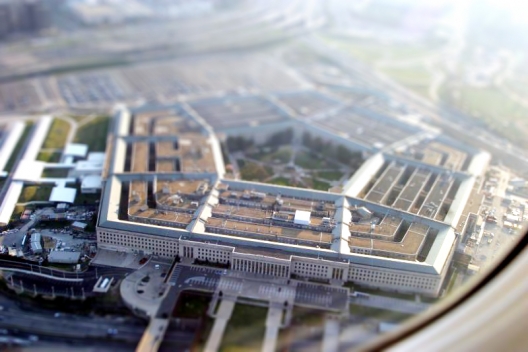
At various times in our history, alarms of a pending defense “train wreck” or “hollow force” reverberated throughout Washington. Today, the Pentagon is indeed vulnerable to a meltdown, in many ways far more severe than conventional wisdom holds. But, if we are clever, and that is a Herculean if, we can still field the forces we need for the rest of this decade and well beyond.
Three overarching factors explain why today is different from the past. First, the need for a force of 1.4 million active duty personnel is highly excessive. Contingencies in Korea and the Persian Gulf must be covered. But no peer military threat approaching the Soviet Union or Nazi Germany looms unless we are incompetent in dealing with China, preoccupied as it is with sustaining enough economic growth to prevent the three or four hundred million living under the poverty line to rebel as has been case throughout China’s long history. And, as we should have learned in Afghanistan and Iraq, military force alone cannot bring peace, stability and prosperity to areas of conflict and violence.
Second, regardless of the sustainability of sequestration that cuts $500 billion from defense over ten years, inbuilt cost growth for people, health care, pensions and weapons systems will reduce the buying power of the Pentagon by about half by decade’s end. If interest rates rise or further cuts follow, clearly this compression in buying power will be greatly accelerated.
Third, after a dozen years of war in which money was no object in caring for our troops, we are facing if not a personnel crisis then a profound change in policies to attract, retain and incentivize our most important asset—-our people.
And if a fourth factor were to be added, it is an obsolescent national security structure still largely rooted in post-World War II and Cold War assumptions and thinking.
The question today is no longer that of the 1960’s of “how much is enough?” In the 21st century, the right questions are “what do we need and why?” when the largest threats are not military in nature and not existential to society as thermonuclear war with the Soviet Union would have been. And here we are very much limited by the frailty of our other tools to cope with the crucial security challenges that include failed and failing governments from Afghanistan to Zimbabwe with Brussels and Washington in between; economic depravation, despair and disparity; and radical ideologies and religious extremism.
Fiscal reality will force major and some will argue draconic changes in sizing and deploying our military. Many of both the extreme right and the left will exaggerate the dangers for opposite reasons. The right will bitterly oppose cuts because they view power as an inherent good and lots of power better. The left will see smaller forces less capable of humanitarian intervention. And the brokenness of the political system will make rational decision-making regarding defense as irrational as the ludicrous way in which the government shutdown and debt ceiling are being handled.
Meanwhile, aside from the Marine Corps that seems to be anticipating the need for dealing with these crucial personnel issues, this is so far a nearly invisible crisis. In fighting the wars in Afghanistan, Iraq and against terror, our forces have not only lacked for nothing. Virtually no expense has been spared to support them, at least those on active duty. And for the ground and Special Forces in action, the prime mission has become “capture or kill,” a mission that will have far less peacetime relevance.
A quadrennial defense review (QDR) is on the near horizon. Unfortunately, a QDR is perhaps the least likely forum to achieve fundamental change as the bureaucratic undertaking is so large as to strangle bold initiatives. So what can be done?
Smart people usually have annual physicals to assess their health. The Pentagon needs precisely that: a no holds barred look at its strengths, weaknesses and opportunities. Missions will have to be changed. Budget cuts and inbuilt cost growth will dramatically reduce buying power. And personnel policies and incentives of the past will not work in the future.
That said, done properly and over time , a ready, well-equipped, highly motivated force of about 800,000 active duty forces should be more than enough to keep the nation safe and strong. Business as usual will lead not to a train wreck or a hollow force but, far worse, to a meltdown.
Harlan Ullman is a senior advisor at the Atlantic Council in Washington, D.C., and chairman of the Killowen Group that advises leaders of business and government and lead author of the doctrine of shock and awe.
Image: (Photo: Flickr/Michael Baird/CC License)
